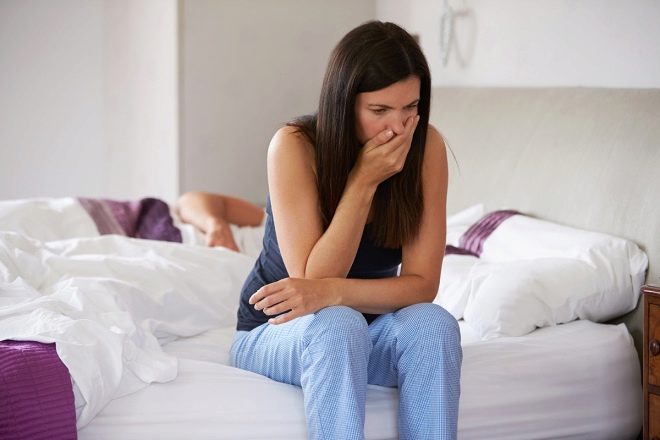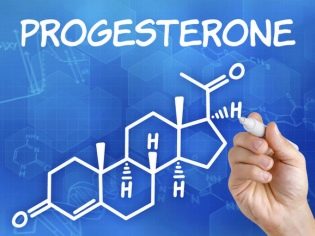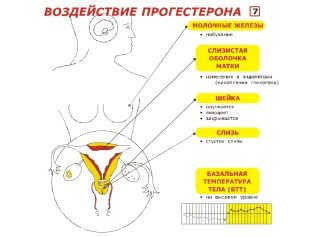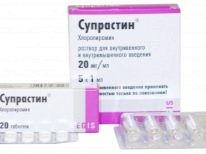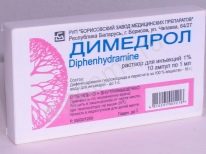At what week of pregnancy does toxicosis usually begin and how to fight it in the early stages?
Toxicosis sometimes darkens a wonderful time for a woman - the period of carrying a baby. Instead of enjoying this amazing period, a woman painfully seeks a way out of an unpleasant and exhausting state. Why toxicosis develops, how it proceeds and how to alleviate its manifestations during early pregnancy, we will tell in this material.
What it is?
In medicine, the concept of "toxicosis" is embedded a broader concept than we used to think. By this is meant any pathological condition that is caused by exposure to toxins. Toxins can be external, exogenous. Such toxicosis develops as a result of microbial infection, because the majority of bacteria poison the body of its carrier with the products of its vital activity. Toxicosis can be endogenous, caused by exposure to substances that are formed in the human body as a result of metabolism. Toxicosis of pregnant women is among the endogenous conditions.
In the body of the future mother, a whole complex of changes takes place, which ultimately leads to signs of toxicosis. A woman literally from the first minutes after conception begins to change hormones, and these changes can make themselves felt with toxicosis.
In the cerebral cortex of women with the onset of pregnancy, a new temporary center is being formed - the so-called “center of pregnancy”. Its task is to control the behavior and physiological functions of pregnancy. The new center, of course, is very necessary for the future mother’s body, but his active work often leads to malfunctions in other centers, in particular, the center responsible for saliva production, for vasomotor functions, and excessive activation of the emetic center.
That is why already in the very early stages of pregnancy, when a woman does not know her position yet, there can be abundant drooling in sleep, nausea and vomiting, headaches, chills, and a slight increase in body temperature.
Although gestational toxicosis is a frequent companion of expectant mothers, especially in the early stages, it is not a mandatory symptom of pregnancy. If there is no toxicosis, it is also quite normal and natural. According to medical statistics, up to 80% of expectant mothers suffer from early toxicosis in varying degrees. A woman's body is exposed to toxic effects due to the fact that in most cases it fails to adapt to pregnancy in time, to accept all the numerous internal changes at once, as due.
In the concept of "toxicosis", doctors include disruption of the gastrointestinal tract, nervous system, endocrine glands, disruptions of immune protection, pathological changes in the cardiovascular and urinary systems. All the signs and symptoms of gestational toxicosis are considered comprehensively, not one by one, and it is by the combination of disorders that occur during the development of pregnancy, doctors can judge the degree, severity, type of toxicosis, and how to deal with it, if there is need.
Start dates and duration
The true causes of toxemia are not fully understood, and the inadequate response of the female body to pregnancy is still incomprehensible.But the basic version is immune. In other words, a woman’s immunity is perplexed - there is a half-alien object in the body, but it cannot be destroyed! From the first minutes after the conception took place, the hormone progesterone is produced in large quantities. It prepares the walls of the uterus for the upcoming implantation, takes care of the accumulation of nutrients and fats, and also affects the immunity of the woman. A fertilized egg (zygote, and later - the blastocyst and the embryo), contains only half of the genetic set, similar to the native. The second half of the genetic material is paternal, it is her immunity that qualifies as an alien object.
So that immunity could not deal with the embryo, progesterone artificially suppresses its mechanisms. In women with strong immunity, the manifestations of toxicosis are usually stronger, because their immune defenses do not give up for a long time. The process of suppressing immunity with progesterone causes changes at the biochemical level, it is these new substances that cause internal intoxication.
After implantation of a fertilized egg, which occurs on average 7-8 days after conception, the production of another “pregnant” hormone, hCG, begins. Chorionic gonadotropin also contributes to the well-being of the future mother. Its concentration increases gradually, and already after a week at about the date when the woman is waiting for the next menstruation, the first signs of toxicosis can appear.
It is usually at 5-6 weeks of pregnancy (if you start to count from the first day of the last menstruation, as all obstetricians do), the woman begins to feel sick, she has dizziness, her taste preferences change. Less commonly described is toxicosis, which appears a little earlier - at 3-4 weeks, immediately after implantation. The most often unpleasant condition first makes itself felt at 7-8 week.
How much continues toxicosis, the question is not easy. Here a lot depends on the individual characteristics of the organism. Experts tend to believe that toxicosis is most likely during the active formation of the placenta - from 5-6 weeks to 14-16 weeks of pregnancy. Most women who suffer from early toxicosis claim that they feel much better after 12-13 weeks of pregnancy. For some, toxicosis is “delayed” to 18–20 weeks.
The severity of the woman's condition is determined in the laboratory, mainly by the level of acetone in the urine and the characteristic changes in the blood formula.
Increasing acetone is always associated with a lack of glucose. In the morning, the sugar level is always lower than in the evening, which is why, most often, toxicosis makes itself felt in the morning.
Symptoms
The signs and manifestations of gestational toxicosis are in general familiar to all women and are actively discussed by them in specialized forums. Most often, toxicosis manifests itself as unreasonable nausea and even vomiting. Any trifle can provoke them, for example, the smell of previously loved perfumes, the taste of toothpaste during morning or evening dress, the smells of cooking food, gasoline, toilet water of the husband - all this can cause a sharp attack of nausea.
Quite often, the first signs of early toxicosis are dizziness. They can be insignificant, rare and short-term, and can cause a lot of trouble - if a woman suddenly feels dizzy, feels weak, then there is a loss of consciousness at the most inconvenient time - when traveling in transport, at work, in the store.
Also common forms of gestational toxemia are belching, including with bile, signs of indigestion (diarrhea, constipation, heartburn), changes in taste preferences, headaches that accompany early pregnancy, occurring mainly in the evenings. Six out of ten pregnant women after conception in a week or two begin daily rises in body temperature. The temperature during toxicosis rises slightly - just above 37.0 degrees, usually in the afternoon or in the evening. It is caused by an increase in progesterone in the body of the future mother, whose concentration reaches a peak in the afternoon.
This temperature does not need medication, antipyretics, it is physiological and can in no way harm the future baby. Most cases of gestational toxicosis in the early stages are also considered to be quite physiological and do not need treatment. Doctors say that you just need to endure the temporary unpleasant symptoms associated with the adaptation of the female body to new conditions. However, persistent toxicosis, which prevents a woman from eating normally, leads to significant weight loss, disruption of the gastrointestinal tract, changes in blood composition, and may require hospitalization.
Rarely, toxicosis is manifested by dermatological problems - skin rashes with and without itching, exacerbation of bronchial asthma, osteomalacia. The symptoms of early gestational toxicosis are very individual and can be present both individually and in combination, much depends on the extent and in what form a woman has it.
Kinds
As already mentioned, toxicosis in a pregnant woman can have various forms and types. It is necessary to distinguish several main types of female malaise at the very early stages of gestation:
Poisoning. About poisoning we are talking if vomiting, diarrhea, abdominal pain suddenly manifested. Such toxicosis is also called bacterial. It is associated with the poisoning of the body with toxins, which in poor-quality food isolated bacteria during reproduction.
Evening. Unpleasant symptoms with such toxicosis occur only in the evening. It may be due to the fact that the woman is tired, not enough to eat during the working day, was experiencing stress.
Despite the fact that nausea and dizziness make it difficult to fall asleep normally, such toxicosis is not considered dangerous, it passes quickly enough.
Morning. This type is most common. It is in the mornings, after a long sleep, the level of glucose in the human body is minimal, nausea and even vomiting appear on this background. Such symptoms at the very beginning of the day are also not dangerous for women and children.
Early. Unpleasant symptoms associated with it are characteristic of women up to 14-16 weeks of pregnancy. If the manifestations are mild, the woman does not suffer rapid weight loss and there is no sign of dehydration, no treatment is required.
Gestosis (late toxicosis). It is a toxicosis that develops at the end of the second or in the third trimester. This is the most dangerous type of toxemia, it can lead to placental abruption, fetal death. Among the causes of maternal mortality, preeclampsia also occupies a leading position. It requires mandatory medical intervention.
The severity of manifestations of a woman can well appreciate herself, but it is better to still report the disturbing points to the attending physician. A minor degree (first) is usually characterized by infrequent vomiting (no more than 3-4 times per day), occurring after a meal. Weight loss with a mild degree does not exceed 3-4 kilograms, the mucous membranes of the woman remain quite moist, the skin is supple. Pulse and blood pressure levels are most often within the normal range. This stage does not need medication.
Pronounced toxicosis (second degree) is characterized by more frequent vomiting, which can occur up to 8 times a day. The woman’s well-being is getting worse. Acetone appears in the urine, a characteristic acetone breath may be observed, the blood pressure decreases, this causes bouts of weakness. Pulse accelerated, dry skin, a woman loses weight up to 6-8 pounds. This stage necessarily requires medical intervention.
Threatening toxemia (third degree) is characterized by frequent and debilitating vomiting (more than 15 times a day), severe dehydration, and large weight loss. This degree is a threat to the life of a woman, without medical intervention is necessary. The skin and tongue of the woman becomes dry, the blood pressure drops, the pulse exceeds 120 beats per minute. The composition of the blood changes, not only acetone is detected in the urine, but also protein.
Who is threatened?
Since the mechanism of the onset of toxicosis is not yet fully understood, its causes are not obvious, it is rather difficult to determine the number of women who are at risk. But long-term observations by obstetrician-gynecologists show that There are sufficiently good reasons to believe that in the early stages women are most susceptible to the development of toxicosis:
- women who become pregnant before 18–19 years old and women who become pregnant after 30 years;
- suffering from various pathologies and diseases of the kidneys, the immune system, as well as having problems with the endocrine system;
- in which the previous pregnancy was accompanied by toxicosis;
- with gynecological problems, in particular, with inflammatory processes in the endometrium;
- abusing alcohol and smoking;
- born of pregnancy accompanied by toxicosis, as well as in the presence of obstetric history of their mothers and sisters of other pregnancies with unpleasant symptoms of intoxication;
- those who moved from central Russia or its southern regions to the north and became pregnant during the first five years after the move;
- which is characterized by latent anemia.
And this is not a complete list of prerequisites for the development of intoxication in the initial gestational terms. When registering for pregnancy, the doctor necessarily collects a full history, he is interested in how the previous pregnancies proceeded, as they were with the close relatives of the expectant mother.
If the obstetrician-gynecologist has reason to believe that the woman is in a state of pretoxicosis, he may prescribe a preventive treatment and make recommendations. Pretoxicosis does not always develop and becomes a full toxicosis, but such a probability cannot be ruled out.
Why is absent?
In the conventional wisdom, toxicosis is almost a mandatory symptom of pregnancy, especially in the early stages. In fact, it is not. Many pregnant women do not test it and easily carry their babies. Why it happens?
First of all, a toxicosis-free pregnancy is possible when a woman has no chronic diseases, no problems with immune pathologies, with metabolism, overweight. The absence of gestational toxicosis as such may be genetically caused — the mother and grandmother of the expectant mother did not suffer from nausea and vomiting when carrying her babies.
In any case, if there is no toxicosis, this is normal. This suggests that the woman's body easily adapted to the new pregnancy, all organs and systems began to be rearranged to work in new conditions, there is no “protest” from the mother's body.
To scare the absence of toxicosis should not. But if he was, and then abruptly disappeared until 12-14 weeks, this may be a sign of a fading pregnancy, the embryo stops developing. If a woman has toxicosis for several weeks or months, and then disappeared, you should definitely visit your doctor and make sure that the pregnancy develops.
The absence of toxemia in the early stages is the most favorable prospect for a woman and her baby. If there is no vomiting and concomitant “troubles”, the probability of premature spontaneous abortion is lower, the child receives enough vitamins, minerals and other necessary substances from the mother’s blood, the mother’s mood and well-being are stable and this creates good prerequisites for the development of the fetus.
Medication Treatment
Treatment with the use of medicinal drugs is prescribed only for moderate and threatening degrees of toxicosis, with severe toxicosis. With a mild degree, you can completely do with traditional medicine, of course, after having coordinated their use with your doctor. An average degree may require treatment with prescribed medications at home or in a day hospital. In severe toxemia, the woman is hospitalized.
Doctors begin to struggle with severe toxicosis after determining the degree and severity of the course. The usual classic treatment regimen includes "Droperidol". This drug belongs to the group of neuroleptics that suppress the vomiting center in the cerebral cortex. The frequency of seizures is reduced. Droppers with this drug have a faster and more pronounced effect than intramuscular injection of the drug. Often, women are prescribed pills.Relanium", Sometimes the drug is recommended"Zeercal". Such therapy allows at the first stage to provide effective assistance - the activity of the central nervous system is regulated, the urge to vomit becomes less.
The second stage of inpatient treatment is aimed at replenishing the water-salt balance, which, due to frequent vomiting and diarrhea, is significantly impaired. In case of severe vomiting, women are given droppers with saline solutions, saline, vitamins. Be sure to enter glucose, vitamins of group B and give ascorbic acid (vitamin C). The woman is shown enterobrimenty - "Polysorb», «Enterosgel". If a woman’s condition continues to be severe due to dehydration, hormone therapy is prescribed - “Prednisolone"(Hydrocortisone).
Expectant mothers with severe toxicosis are recommended antihistamines "Suprastin», «Tavegil"," Diprazin ","Diphenhydramine". These drugs, according to the classical treatment regimen, are indicated for intramuscular administration. Along with the medication is recommended plenty of warm drink, bed rest or semi-bed rest.
Today can be applied and the method of immunocytotherapy. It is resorted to, if the treatment with medicines does not give a tangible effect. Under the skin in the area of the forearm, the expectant mother is injected with an extract of her husband's lymphocytes. Within a day, relief should come, because the woman’s immunity “switches” to a new high-risk object — to alien cells. However, this method has only a temporary effect and exists to temporarily make a woman feel better.
A medically aborted pregnancy is carried out in severe threatening toxicosis in cases where the medical methods described above did not work within 12 hours from the start of therapy if the woman’s condition continues to be threatening. Also, abortion is strongly recommended as the only way to save life, if a woman has dystrophy, renal failure, and nephropathy due to severe toxicosis. Discontinue early pregnancy with induced abortion.
Numerous homeopathic remedies (for example, Nux vomika-Gomakkord, Mercury, Kolkhikum-6, Vomikumheel, Kokkulus Indus and others), although recommended by manufacturers as effective means for any form of toxicosis pregnant, proven have no effect.Clinical trials of these agents have not been carried out, and the doses of the active ingredients in the preparations are so small that by and large the woman will receive only small amounts of sugar, water and only a few molecules (!) Of the active ingredient.
In case of severe toxicosis, it is not worth trying to treat yourself with homeopathic remedies that are considered harmless. You can miss the precious time that is needed for a woman to receive qualified medical care.
Homeopathy is harmless, but alas, it is completely useless, especially in threatening conditions. The mild stages of toxicosis usually do not require the use of medications and homeopathy, and in severe cases, treatment should be quick, competent, and qualified. Therefore, it is not necessary to prescribe yourself drugs, and even more so you do not need to be silent about the fact of poor health, believing that this should be the case during pregnancy.
Folk remedies
Traditional medicine has hundreds of recipes that help women "in position" to get rid of unpleasant and obsessive nausea and dizziness. These recipes have been tested by dozens of generations of women, but it should be understood that resorting to them makes sense only when a woman has a mild toxicosis that does not threaten her life and health.
Helps relieve nausea and the pathological perception of aroma aromatherapy. Pregnant women still resorted to it in ancient Rome, in ancient Greece, treatment with essential oils was also widely used in Russia.
A few drops of peppermint essential oil help to deal with morning nausea - they need to be applied to the wrist or handkerchief. It is enough to put next to him during washing, breakfast.
Aromatic ginger oil helps reduce nighttime toxicosis and eliminate bouts of vomiting that occur after eating. A drop of oil is enough to put on the palm, rub well, bring to face and take a deep calm breath. If a woman is tormented by bouts of dizziness, she is advised to carry a small bottle of essential oil of pine or fir. A few drops of such coniferous oil on the wrist will help to cope with unpleasant sensations.
When choosing an essential oil, one must take into account one's own propensity to allergies, because aromatherapy is not for everyone. If it is not possible to visit an aromatherapist, you should start from what groups of substances there is an allergic reaction. If you are allergic to citrus fruits, you should not use the essential oils of orange and lemon; if you are allergic to pollen, you should avoid essential oils and extracts of tropical and exotic plants, flowers and fruits.
If, after applying the oil, redness appeared on the wrist, a runny nose, tearing, itching of the skin began, this method of help with toxemia should be categorically rejected, giving preference to other options.
More widely used in Russia historically received phytotherapeutic methods of combating gestational toxicosis. If nausea suffers in the morning, it is recommended to drink tea with a mint leaf. With frequent vomiting, lemon water can help a woman. For its preparation for a glass of clean drinking water take about one teaspoon of lemon juice. Also effective, according to reviews of pregnant women, are decoctions of rosehips and homemade juice from sour fresh cranberries. Such drinks will not only relieve nausea, but also enrich the body with vitamin C.
In Russia, even before the appearance of skilled obstetricians, when all hope was only for the midwife, women took pumpkin tea for nausea. To do this, take the pulp of the pumpkin, finely chopped it, and then brewed with boiling water. They drank like ordinary tea. Popular was and tea with oregano, or rather, a decoction made from dried oregano and boiling water. 300 grams of water took no more than 10 g of herbal raw materials. Similar broths were made from lemon balm, plakun-herbs, and calendula flowers.
The decoction of chamomile and sage, as well as tea with the addition of auricolum tincture of water, is used selectively, in small doses.
Honey and bee products are usually not recommended for pregnant women, but in some cases it is allowed to drink tea with the addition of a teaspoon of fresh and high-quality honey.
Anyway, Before using herbal remedies, you should always consult a doctor.because the herbs are not as harmless as most average people think. They can lead to the development of a strong allergic reaction, impaired digestion, sleep, a decrease or increase in blood pressure, and even abortion in early pregnancy.
Nutrition
It is with food intake that the most common problems arise with early gestational toxicosis. In addition to changing taste preferences, a woman's appetite is disturbed (either he does not have it, or it is elevated). The menu should be given special attention. If it is compiled and planned correctly, many unpleasant manifestations and symptoms can be avoided.
The main mistake of future mothers lies in the misunderstanding of the essence of toxicosis. They believe that the less they eat, the less they will be nauseous and nauseous. This is not true. The second big misconception concerns a diet based on a single product or a single food group. You can often hear that a woman who suffers from early toxicosis, more experienced moms advise you to eat what she wants and does not eat what makes you sick.
In the early stages, the fetus and the expectant mother need vitamins and minerals in full, and therefore a “bias” in favor of only cottage cheese or only apples can cause metabolic disorders, the development of allergies, both in the mother and in the future in the fetus.
A balanced diet during the period of toxemia should exclude products to which a woman develops an emetic reaction, but they definitely need to find a worthy replacement. For example, with an inadequate response to pork, you can cook veal or poultry meat. But meat in one form or another must be in the diet. If a woman has nausea from cabbage and beets, you need to add squash, pumpkin to the diet. You need to ensure that there are enough fruits rich in vitamin C. If you are tormented by vomiting, you should not in any case refuse to eat salt, because it allows you to partially restore the minerals lost from vomiting.
Unlike the second and third trimesters, when salty is undesirable, at the very beginning of pregnancy, you can afford salted cucumbers, fish, but in very moderate quantities. Carbonated drinks and fatty foods, canned foods, and smoked foods are completely contraindicated in toxicosis.
It is necessary to abandon a large number of sweets, because sugar contributes to the fermentation processes in the intestine.
It is best during this period to eat raw vegetables and fruits, cereals (dairy and dairy-free), boiled and steamed meat and dishes from it, fish, cottage cheese, dairy products. Nuts and seeds, which some use as an emergency aid for nausea, it is better to replace the croutons of white bread, cooked at home without spices. Nuts can cause severe allergies, and white crackers will not cause negative effects.
It is important not to forget to eat first courses every day. Food should be taken fractionally, in small portions, but often - every 3-4 hours.
Practical advice
Compliance with simple tips will help to cope with early toxicosis. Universal recommendations include the following tips:
- Start the morning right. Do not get up on the alarm bell too abruptly. Lifting should be gradual and smooth. Keep a plate with white crackers or dried fruit on the bedside cabinet. One piece of dried apricots or crackers right after waking up can get rid of morning vomiting. Use children's toothpastes - they are less harsh and usually do not lead to a fit of vomiting.For breakfast, be sure to drink sweet tea after cereal or omelet to increase blood glucose levels. Go
- Eliminate sharp odors. During the day, try not to be in smoky rooms, do not use a large amount of perfumery, if necessary, do not hesitate to ask others to reduce the amount of used perfumes or toilet water.
If you need to go to work or study in public transport, take with you a clean hygiene bag, like those you used to give on airplanes (anything can happen). Carry wet wipes, a bottle of non-carbonated drinking water in your bag, with a slice of lemon.
- More in the fresh air. If the distance allows, replace the trip on the bus for a walk, and in the evenings make it a rule to walk before bedtime. For walks, choose a more quiet and secluded places, parks, squares, forest belts, located away from highways.
- Rest more often. If possible, try to lie down for a day at least half an hour. But in the evening after dinner do not immediately go to bed, first go for a walk. This will contribute to better digestion and the resolution of problems with nighttime toxicosis.
- Sleep with the window open. The design of modern windows allow you to sleep with the door ajar, even in winter. The better the room is ventilated, the less the future mother will feel sick. In summer, you can sleep with the window open or the balcony door ajar.
- Avoid heavy loads and sudden movements. An attack of nausea can even be triggered by a sudden change in body position. So, teach yourself to be sedate, measured, move more smoothly and carefully. Avoid physical exertion, which causes palpable fatigue, as well as active sports for which you can lose consciousness and be injured (bicycles, roller skates, a treadmill in the gym). To the benefit of going swimming, skiing in the winter season.
- Stay in a good mood. Psychosomatic causes of toxicosis - rejection of the child, unwanted pregnancy, fear of childbirth, leaving the baby’s father, fear of losing the child. Get more positive emotions, tune in to the fact that everything will be fine and the symptoms of toxicosis will recede faster than you can imagine.
If suddenly toxicosis has intensified, you should not waste your time - contact your doctor. Complaints of toxicosis are not as insignificant and ridiculous as it may seem, because of its manifestations can cause serious pathology.
About toxicosis in early pregnancy, see the following video.

